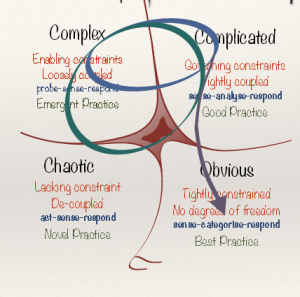 It is always welcome to read a thoughtful article that reminds me, no, it actually inspires me, by reinforcing my own belief that innovation is progressing, even if this is sometimes frustratingly slow. The innovation architecture is progressively being recognized and put into place, it’s forming the building blocks of the innovation platform we need to build upon, ones for more radical innovation outcomes.
It is always welcome to read a thoughtful article that reminds me, no, it actually inspires me, by reinforcing my own belief that innovation is progressing, even if this is sometimes frustratingly slow. The innovation architecture is progressively being recognized and put into place, it’s forming the building blocks of the innovation platform we need to build upon, ones for more radical innovation outcomes.
So the article “Want to Win at Business Model Innovation? Put these Four Pillars in Place” was written by Rick Waldron, ex Nike, and Intel.
He grabbed my attention with this comment early on in the article:
“ Little attention has been paid to the architecture required to stand up a sustainable, impactful new business innovation capability. Those of us battling it out in the trenches are left to learn the hard way”
I so very much relate to this central recognition that most organizations lack a solid, well thought through innovation architecture, it is one of the real reasons innovation is constantly under-delivering.
Rick points out:“Corporate innovation efforts by and large continue to fall far short of moving the needle in any significant, sustained way or of delivering on the promise of future-proofing companies against ever-increasing disruptive forces.
While a growing number of companies have begun to find some success in implementing design-centered thinking, lean innovation techniques, jobs-to-be-done analysis, and empowering employees to solve customer and internal process problems, much of the focus has been on supporting current business models – i.e., on incremental rather than game-changing innovation. But this work is merely the table stakes for staying in the current game”
The view offered in this article suggests four pillars to be put into place: 1) A Committed and Engaged Leadership, 2) A Comprehensive Innovation Strategy, 3) A Sustained Mindset Shift and 4) A Comprehensive Tool Kit.
Rick’s article just gave me the chance to go back and review my thoughts and relate his excellent suggestions and thinking into some of the work I have written about in this area. So I wanted to link them up a little more in my mind on some diverse and previous thoughts that I have written about and hopefully link them far more into yours and this article of Rick’s. Continue reading “Building upon the four essential pillars for innovation”




